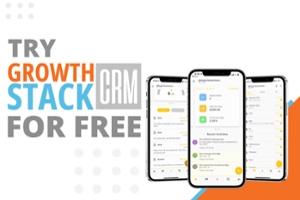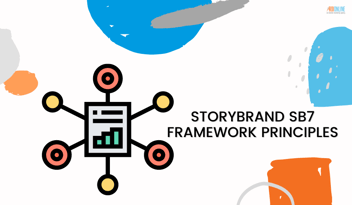Simplify Your Marketing Campaign With The StoryBrand Framework
We all love a good story, the human brain craves it all the time. Stories can be used to pull in an audience and get them interested in what you're saying, but stories are often difficult to come up with on the spot or for your marketing campaign.
The StoryBrand Framework is one of the best ways for you to grow your business through the use of stories. This framework can guide your brand to create a clear message and simplify your marketing campaigns.
A common thread of all great stories ever told is the hero's quest for self-actualization and meaning. Donald Miller, a bestselling author, memoirist, and CEO of StoryBrand found this was an important part in creating his framework that helps brands tell powerful stories that their customers want to hear on their social media platforms to capture consumers' attention.
He trains marketers and turns them into StoryBrand certified individuals that can utilize the power of stories to bring businesses in front of the right people. StoryBrand marketing has helped hundreds of businesses, brands, nonprofits, and even giant corporations.
Whether you just started introducing your products and services to the world or have decades of experience in your industry, you can always use the StoryBrand Framework to help you simplify your marketing campaigns, expand your business, and tell a story that resonates with your customers.
A company with a strong story that differentiates itself from its competitors will attract customers more easily. The framework also gives them a plan on how their products and services can reach their ideal audiences.
A brand's narrative creates an emotional connection between your business and customers while communicating exactly what makes it unique.
What's The StoryBrand Framework?
The framework is a tool brands can use to create and communicate your story. This is the primary tool of a StoryBrand Certified marketer. It consists of seven key components that are critical for any clear and compelling narrative. It's not enough to tell a story, it has to be the kind that calls them to action.
This framework outlines a company's desired relationship with their customer and gives them a plan to get connected. Let's break them all down and learn how you can capture your customers with your story.
There are 7 parts to making a great marketing message that resonates with your customers:
- 1. The Hero of the Story
- 2. The Problem
- 3. The Guide
- 4. The Plan
- 5. The Call to Action
- 6. The Story of Failure
- 7. The Success Story
.png?width=1200&name=84287%20-%20How%20To%20Use%20The%20StoryBrand%20Framework%20(3).png)
Part 1: The Hero
Every story begins with a hero who wants something. In movies, viewers should identify the hero within minutes. In the Bourne Identity, 12 minutes in without knowing what Jason wants, and you're gone.
Most companies don’t offer a concise and clear explanation to their customers about what they do. When you define something your customer wants, you invite them into the story that is uniquely made for them.
It's more than just a bunch of marketing materials. And this is precisely why people are looking for it; they want to be invited by someone who understands their problem in detail and with empathy - even if only briefly - and from there, begin on a path that leads to a transformation.
Part 2: The Problem
When you define the problem for your customers and offer to resolve it, they're interested. The only reason people are going to your website, checking out your product or service, or walking into your retail store is because of their problem and they need a solution from someone like you!
Building a brand starts with the problem you want to solve. Know what problems your brands can fix and clearly define them. You'll be able to more effectively market how well it solves those troubles, which will make it clear why customers should buy from you instead of someone else.
Part 3: The Hero Meets a Guide
Since the hero in this story is the customer, you will position your brand as the guide that will lead the hero to the solution he's looking for. The customer knows what he wants; your brand just needs to show how it will get him there and make the path clear for them.
As the guide, your marketing campaign has to spell out the solution for heroes. You need to be the kind of guide that helps them avoid failure with empathy and authority. Explain that you understand their problem and have helped others overcome it before through your products or services.
Part 4: The Plan
After you've established your brand as the way to solve their problems, it's time to give them a plan. Here is where you ask for the money. The plan needs to be clear and present everywhere in your marketing materials and it needs to be simple and easy-to-understand so they can take action right away!
For some brands, there are more technical steps that need to be taken in order to get results, but most businesses just want an answer with instructions on how to do what works best for them.
The plan is the most important part of any sales pitch. It needs to be clear and concise or you'll lose them before they even hear what your product can do for them.
Start with a problem that brands like yours solve, then try and simplify it as much as possible so all the focus lies on solving their problems in an elegant way: this should entice customers enough to want more information from you about how things would work out.
The plan is not the time to educate your customer. It's a chance for you, as the experienced brand qualified to solve their problem, to show them how to move forward with confidence.
Part 5: The Call to Action
The best way to get your customers into the next step is with a clear and compelling call to action. The simplest way to do this is by using an obvious “Buy Now” button, but if you want them on the phone in person then give them a space where they can “Schedule a Call”.
People won't respond if they don't have to. But if you give them a push, they'll do what it takes to complete the hero's journey. That's why your customer needs something that calls them to action.
Your customers know instinctively that there is always an easier way out of anything, but it takes someone special to be willing to do the emotional labor of showing them the way.
This is where people often choose between accepting or rejecting your offers: will we provide a solution, the exact one you need, and the kind you can only get from us - or go somewhere else and go through the whole process all over again.
Parts 6 & 7: Failure or Success
On these last parts of the StoryBrand Framework, cast a vision of what life is like when they succeed after accepting your offer and how things will turn out for them without you. Imagine an alternate reality where they fail after rejecting you. What would happen then?
Do: Go overboard on their success story.
What will their lives look like when they get what they want through your product or service?
Don't: Go on overexplaining what they'll be missing.
Choose to tell a story that helps them avoid failure. Don't end up shifting their focus to a negative marketing message that will give your brand a bad rep in their minds.
Now is time for you to get started. Market your company with a story that will resonate and excite customers. Make sure you clarify your message so all audiences can enjoy the experience!
If you want to take an expert approach in creating a marketing campaign using the Donald Miller StoryBrand Framework, consider working with a StoryBrand Certified Guide.
At ROI Online, we help brands of all sizes clarify their message and take their story in front of customers that need their product or service. It's your chance to grow your business by making meaningful connections. Schedule a free strategy session with us today and open your brand up to new possibilities.
Click here for more valuable information!








